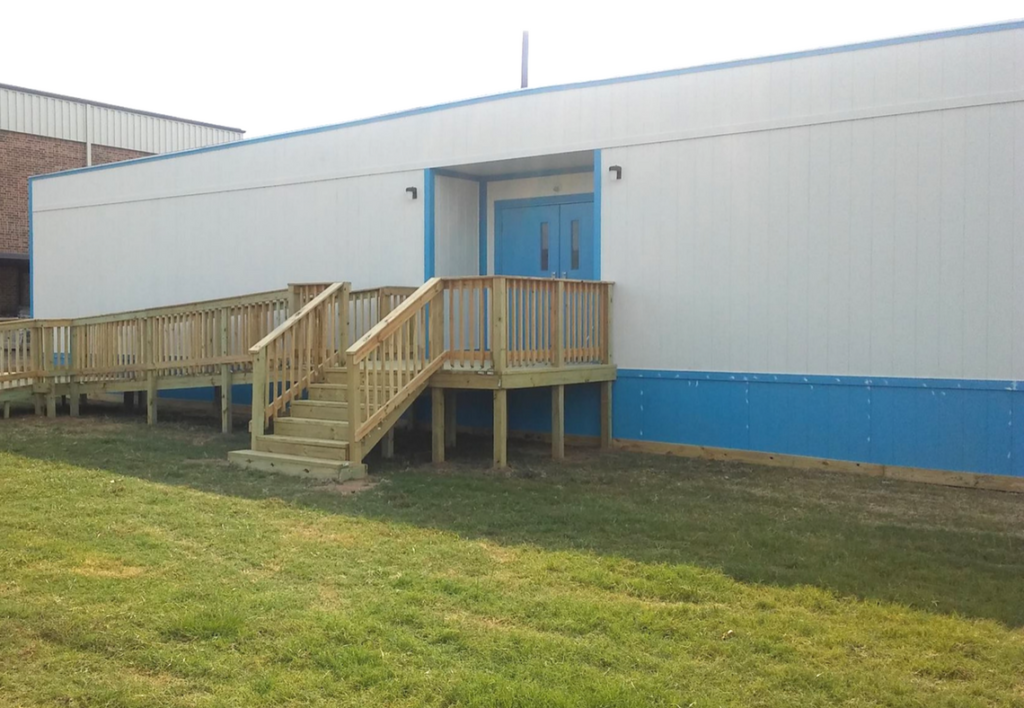If you’re in the market for a modular building or trying to figure out if a modular building is right for you, the information below will help you understand the key features of modular and prefabricated (prefab) buildings. Think about modular buildings like legos for grown ups. We take big legos that are built in a factory, move them on site and assemble them to make a building designed by the customer. Each big ‘Lego,’ or section of the building is constructed in a factory and then transported to the destination site where it’s assembled. We’ll talk more about this below. Here are the 7 key features of modular buildings.
1. Factory Built- constructed off site
Modular buildings are constructed in an enclosed factory that is temperature and weather controlled. Unlike traditional construction, modular manufacturers are able to keep supplies and the building out of the elements which has benefits. Weather delays are eliminated while the building is being constructed. The materials used to build your modular building are also kept in a temperature controlled environment so they don’t experience any negative effects from water or extreme heat. The building site is prepared while your building is under construction, which shortens the project timeline.
2. Transported to site and assembled
Once your building is complete and has passed inspection at the factory, it’s transported to the site. On location, your building will be set according to local codes and manufacturer’s guidelines. While there are a variety of ways to block a building, most modular buildings use an above ground system with concrete piers.
3. Customizable – limitless design potential
Modular buildings are customized to suit the needs of your business. We call this ‘design build.’ You can choose wall placement, number of restrooms, number of sinks, square footage, even down to the number of outlets you need. You can go with standard finishes for the flooring or you can choose upgraded finishes. If you prefer, there are also standard floor plans that are used for more cost and time efficient timeline.
4. Relocatable or Permanent – you decide
Most people think of modular buildings as trailer homes or construction trailers. That’s not the case! While they do have the flexibility to be temporarily set and moved at a later time, modular buildings can be permanent. There are finishes available for stone facades, wood facades, and more. Your modular building can look as good as the stick built business next door. If at some point you need to relocate the building, that’s possible too.
5. Reduced on-site construction hazard and timeline
Construction sites come with a certain hazard level, which is why you see guys working in hard hats and steel toed boots. Because the majority of the construction process happens in-factory, the on-site construction hazard is reduced significantly.
The other bonus is that your building site can be in process while your building is being constructed in the factory. Let’s say it takes 2 weeks to excavate and grade your building site. That’s two weeks you can shave off your project timeline.
6. Greener Construction
Being green is the wave of the future – and modular construction is doing its part. The Modular Building Institute says that the process of building modular is inherently green. While modular buildings can be built to meet energy efficient green ratings, the MBI is actually referring to the construction process. Modular buildings have 90% less material waste than traditional construction due to their predictable construction process and uses much less shrink wrap, cardboard, wood pallets, and other building materials. Modular buildings are also designed to be disassembled and moved as discussed above. If there’s no need for the building anymore, it can be moved to a location and put to good use.
7. Simple On-Site Expansion at Later Date
Let’s say that today your project budget can swing a 3,000 square foot facility but you know that you’ll outgrow that space in 4 years. Modular construction easily accommodate your growth. In 4 years, we can come back in and add a unit or two to increase your building size. This can either be done by adding to the current building or installing the space next to your current location and adding a breezeway. Either way, you can keep your current place of business without fear of losing your local customer base.
Which key feature of modular construction is most beneficial to your upcoming project?
